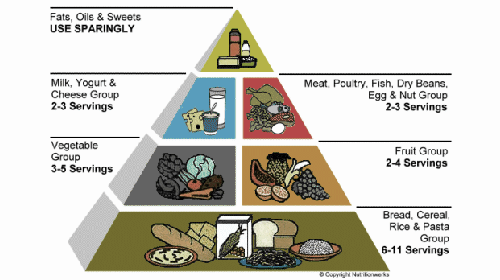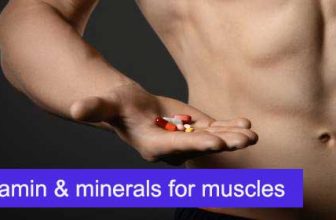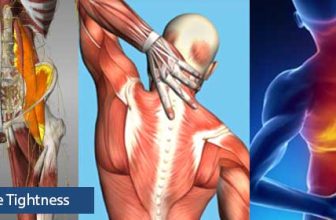
Nutrition – the science of food with respect to the nutrients and other substances therein.
Includes:
- the actions and interactions of nutrients and their relationship to health and disease.
- The process by which the body ingests, digests, absorbs, transports, utilizes, excretes food components
TOPICS:
Window of Essentiality – the range of food intake levels, for essential nutrients, which are suitable for survival
Nutrients – chemical substance in food that nourish us by providing energy, materials for building body parts and factors to participate in the bodies chemical processes.
Classes of Nutrients:
- Carbohydrates
- Proteins
- Lipids or Fats
- Vitamins
- Minerals
- Water
DIGESTION AND ABSORPTION
Digestion – is the process where food is broken down into forms that can cross the GI tract wall and enter the blood and lymph.
Components of the GI tract:
- Mouth
- Oral cavity ( mucus, enzymes)
- Esophagus ( transports bolus)
- Stomach
- Small intestine (made up of duodenum, jejunum, ileum)
- Large intestine (made up of cecum, colon)
TRIVIA:
Mastication – Chewing
Swallowing – Deglutition
Peristalsis – the involuntary muscle action which moves food throughout the digestive system.
Chyme – when food becomes more liquid in form
Bile – is made in the Liver; and stored in the Gall Bladder
Pancreas fuction in digestion – secretes digestive enzymes
Absorption – process by which substances are transferred across the GI tract wall into the blood and lymph
Small Intestine – Primary Site of Nutrient Absorption
Large Intestine -Primary Site of Salt, water and Vitamin absorption
Salivary Amylase and Pancreatic Amylase – enzymes that break down starch ( CHO) into simple sugars
Lingual Lipase ( in saliva) and Pancreatic Lipase – enzyme that break down dietary lipids
Pepsin – enzyme that breaks down proteins into polypeptides
Emulsification – peristaltic action of small intestine that break large fat globules into smaller ones.
Chylomicrons – large lipoproteins that transport lipids from Small Intestine to other locations in the body by surrounding free fatty acids ( FFA) and monoglycerides (MG), and make them water soluble
Effects of Increasing blood alcohol level:
- Short term : intoxication and depress CNS neurons
- Long term: liver disease
CARBOHYDRATES:
– most important physiological consequence of carbohydrates intake is that it Maintains bodily levels of glucose
Monosaccharides – simple sugars
3 Important Dietary Monosaccharides
- Glucose
- Fructose – abundant in fruits
- Galactose – abundant in dairy products
Glucose – a monosaccharide; the body’s most important fuel source.
Glycogen – the stored form of glucose in the body; It is stored in the LIVER and the MUSCLES.
– known as Animal Starch
Maltose = Glucose + Glucose = known as malt sugar
Sucrose = Glucose + Fructose = known as table sugar and is abundant in sugar cane
Lactose = Glucose + Galactose = known as milk sugar and is found only in mammary glands of lactating animals ( not plants)
Plant Starch – the most abundant polysaccharide in the diet. Abundant in potatoes and rice.
Fiber – found only in plants
Soluble Fiber – dissolves or swell in water; metabolized by colonic bacteria
Good Sources of Soluble fiber:
- Apple, bananas, oats, citrus fruits, legumes
Insoluble Fiber – fiber that, when it is consumed, just passes through the body and is excreted without getting absorbed into the bloodstream
Good sources of insoluble fiber:
- Wheat bran, wheat products, whole grains, veggies
Dietary Fiber – acts as FILTER in food and provides satiety without overeating
TRIVIA:
- 55% of caloric intake should be carbohydrates
- 80% should be complex carbs, 20% or less should be simple sugars
- Ideal fiber intake is 30-40 grams per day
Constipation is a consequence of excessive fiber intake.
LIPIDS: Triglycerides and Fatty Acids
Lipids – characterized by being ‘water insoluble’
Fats – triglycerides which are solid at room temperature
Oils – triglycerides which are liquid at room temperature
Saturated Fatty Acid – if all the carbon bonds in a fatty acid are single bonds
Monounsaturated Fatty Acid – if one double carbon bond exists in a fatty acid
Polyunsaturated Fatty Acid – if more than one double carbon bond exists
TRIVIA:
- Unsaturated fatty acids are better because they are more natural and easier for the body to break down
- If saturated fatty acids predominate, the trygliceride is usually a FAT
- If unsaturated fatty acids predominate, the triglyceride is usually an OIL
- 40% of the energy used by the body is derived from fatty acids ( when at rest and light activity)
- Animal products are the major source of fats and fatty acids
- Dietary saturated fat is associated with elevated LDL ( low density lipoprotein). This leads to Atherosclerosis and Heart Disease
Hydrogenation – the process by which food processors convert some of the unsaturated fatty acids in oils to saturated fatty acids.
Essential Fatty Acids – OMEGA -3 and OMEGA -6 ; they must be obtained nutritionally because they cannot be synthesized by the body.
Omega 3 Fatty Acids of Interest:
- LNA ( sources: canola oil, soybean, plant leaves, flaxseed)
- EDA ( sources: tuna, salmon, fish oil)
- DHA ( sources: tuna, salmon, fish oil)
Omega 6 Fatty Acid of Interest:
- Linoleic Acid ( souces: corn oil, soybean oil, safflower oil)
Physiological Importance of Triglycerides:
- Storing Energy
- Insulation
- Transporting Fat- Soluble Vitamins ( A, E, D, K)
- Provides Satiety
TRIVIA:
- Cholesterol is a vital component of Brain and Nerve cells
- Excessive cholesterol speeds the development of atherosclerosis and heart disease
- 2 ways the body gets cholesterol: LIVER SYNTHESIS & DIET ( animal food, dairy)
- Phospholipids are a major component of Cellular Membranes and even though there are a lot of sources of phospholipids, our body synthesizes all the phospholipids it needs
Recommended intake levels of Lipids:
- No more than 30% of your caloric intake should be lipids
- Saturated fats should not exceed 10% of caloric intake
- Omega 3 should comprise 0.5%
- Omega 6 should comprise 3%
- Trans fat should be taken in Trace amounts
PROTEINS:
Proteins – made up of amino acids linked by peptide bonds
– it is important to take in protein because it gives our body its only useable source of NITROGEN
Essential Amino Acids -the body cannot synthesize them and they must be obtained from the diet
Semi -Essential Amino Acids– they can be synthesized from Essential amino acids if they are provided nutritionally
Non – Essential Amino Acids -the body can synthesize them
- The body needs 20 different amino acids to function
- There are 9 Essential Amino Acids
- 2 Semi -Essential Amino Acids
- 9 Non -Essential Amino Acids
- Metabolism of amino acids for energy accounts for about 10% of energy use in the body
Important Functions of Amino Acids in the body:
- Protein synthesis
- Conversion to other amino acids
- Special functions ( precursor to formation of important physiological compounds)
- Conversion to Glucose
- Energy
- Conversion to Fat
Gluconeogenesis – the formation of glucose from other metabolites and not from glycogen
Important Functions of Proteins in the body:
- Stuctural – (muscle, bone, Connective tissues…)
- Regulatory – (enzymes…)
- Fluid Balance – (protein in tissues provides osmotic pressure to pull back liquid in tissues)
- Transportation – ( hemoglobin…)
- Acid- Base balance – ( pump ions in and out…)
TRIVIA:
- Proteins are the main structural components of Muscle, Connective Tissue, Bone, Matrix, Organs
- Animal Meats are the most nutrient dense source of protein
- Water packed tuna – 85%
- Chicken – 70%
- Beef – 45%
- The most protein- dense plant foods are LEGUMES
- For adults over 19 years, the Recommended Daily Intake of protein is 0.86 grams per kilogram of body weight.
- High protein diets can be damaging to the Kidneys
- Protein Malnutrition causes Edema, Tissue wasting, stunted growth
Water Soluble Vitamins
Vitamins ( co-factors)– are organic compounds which occur naturally in foods which are needed for normal metabolic functioning
– generally must be obtained nutritionally ( body cannot synthesize them)
Too much of a vitamin is called toxicity, too little is deficiency
Vitamin B – rarely reach toxic levels because they are water soluble, so excess of it are excreted in the urine
1. Vitamin B Complex:
– Thiamin ( Vit B1)
– Riboflavin ( Vit B2)
– Niacin ( Vit B3 )
– Pyridoxine ( Vit B6)
– Cyanocobalamine ( Vit B12 )
– Pantothenic acid
– Folic acid ( or folate)
– Biotin
a. Vitamin B1- Thiamin
Sources:
Best : pork, “enriched foods” ( enriched usually only B1,B2,B3)
Good: sunflower seeds, whole grains, legumes
Deficiency Seen in : people in poverty and alcoholics
One sign of deficiency: Beriberi
b. Vitamin B2 – Riboflavin
Sources:
Best: dairy products, “ enriched foods”
Good : mushrooms, spinach
Deficiency Seen in : alcoholics; people lacking in dairy products in their diet
One sign of deficiency: inflammation of mouth and tongue; cracks at the corners of the mouth
c. Vitamin B3- Niacin
Sources:
Good: Mushrooms, bran, tuna, salmon, meats, asparagus, peanuts, “ enriched foods”
Deficiency Seen in : alcoholics; people whose diet consist of corn and corn products
One sign of deficiency: muscle weakness
d. Vitamin B6- Pyridoxine
Sources:
Best: fish and poultry
Good : bananas, spinach
Deficiency Seen in : adolescent; adult and elderly women
One sign of deficiency: seizures
e. Pantothenic Acid
Sources:
Best : peanuts, egg
Good : most vegetables, milk
f. Vitamin B12- Cyanocobalamine
Sources:
Best : organ meats
Good : dairy products, animal meats
Deficiency Seen in : elderly and vegetarians
One sign of deficiency: tingling sensations
- Lack of Vitamin B12 leads to FOLATE deficiency
- Folic acid depends on Vitamin B12 for activation
- Unlike other water-soluble vitamins, Vitamin B12 can get stored in the body
- Deficiency of folic acid is seen in pregnant women
- One sign of folic acid deficiency is MEGOBLASTIC ANEMIA
- One good source of folic acid is vegetables and best source of folic acid is green leafy vegetables
- Food preparation ( particularly heat) can destroy 50%-90% of folate contents in foods, this makes Orange Juice a good source
- Vitamin C is known as ASCORBIC ACID
g. Biotin
Good source: cheese
One sign of deficiency: dermatitis
Fat Soluble Vitamins ( A, E, D, K)
- Fat soluble vitamins are stored in the LIVER and FAT TISSUE
Vitamin A
- Around 90% of Vitamin A is stored in the liver
- People who have low intake of Vitamin A have increased risk of infection because of the decrease in their mucous production
Symptoms of Vitamin A Deficiency: dry mucus membrane , night blindness, poor growth
Sources of Provitamin A: plant foods ( sweet potatoes, broccoli, spinach)
Sources of Preformed Vitamin A: animal foods ( liver, fish oil, milk, butter)
Functions of Vitamin A:
1. Vision — retinol ( a retinoid) = necessary for triggering visual responses and adjusting to dim light
– Production of corneal mucus ( mucus of cells lining cornea. Not tears)
2. Epithelial Cell Growth
– Body surfaces that produce mucus are dependent on Vitamin A to avoid deterioration of mucous forming cells ( skin, GI, urinary, eyes, lungs)
3. Growth and Reproduction
– Vitamin A required for bone maintenance, cellular division and normal immune response
4. Cancer Prevention
– Carotenoids are antioxidants and therefore deactivates harmful compounds like free radicals
Vitamin D
- Without Vitamin D, we lose the ability to ABSORB, RETAIN, and DEPOSIT calcium.
- Rickets – Vitamin D deficiency in infants
- Osteomalacia -Vvitamin D deficiency in adults
- When Vitamin D level is too high, it results in CALCIUM DEPOSITS in the kidney and other organs
At risk for Vitamin D deficiency: people with kidney liver disease, people not receiving adequate sunlight, people who have fat malabsorption ( cystic fibrosis)
Dietary Sources of Vitamin D: fortified milk, fish oils, tuna, salmon
Non-Dietary Source of Vitamin D : sunlight
Vitamin E
- Vitamin E is the vitamin most noted for its anti-oxidant and anti-aging properties
Vitamin K
- 50% of Vitamin K absorbed daily by the body is obtained from intestinal bacteria.
- The main function of Vitamin K is BLOOD CLOTTING
- A symptom of deficiency of Vitamin K is: poor blood clotting or haemorrhaging
WATER, MINERALS AND ELECTROLYTES
- Around 60% of a person’s body weight is water
Water:
- In terms of energy expenditure, it is a good idea to hydrate with 1ml of water for every calorie of energy expended.
- CAFFEINE and ALCOHOL act as diuretics that cause excess water to be lost as urine
- 20%+ water loss in the body can cause DEATH.
Major Functions of Water:
1. Medium: Water is the basic medium of ICF + ECF; Every cell is bathed in fluid and contains fluid (mostly water) in which ions, organelles, enzymes, other components are dissolved/ suspended.
B. Waste Removal: Most toxins or unstable products on body are converted to water- soluble compounds- can be excreted in water of urine.
C. Temperature Regulation: regulates temperature changes and stabilizes body temperature.
ELECTROLYTES
Electrolyte – any substance containing free ions that make substance electrically conductive
Ion – an atom or a molecule where the number of electrons is not equal to the number of protons, giving it a net positive or negative electrical charge.
Function of Some Electrolytes in the Body:
Sodium – key for retaining body water; make up major part of ECF
– Sources: table salt; processed foods
Chloride – component of stomach acid; aids in nerve impulse action
– Sources: table salt; processed foods
– Excessive vomiting can lead to chloride deficiency due to loss of stomach acid, may result in convulsions
Potassium – aids in fluid balance; make up major part of ICF; aids in nerve impulse action
MINERALS:
- Post menopausal women absorb the least amount of calcium
- Absorption of Calcium:
– enhanced by vitamin D, phosphorus, lactose, glucose, estrogen
– hindered by high fiber
- iron in spinach and legumes has bioavailability factor ( more available for our body)
- ANEM IA and FATIGUE are symptoms of iron deficiency
1. Calcium
Functions: Bone and teeth strength ( ~ 99% of calcium is in bone); Nerve impulse transmission; Muscle contraction
Sources: Dairy, canned fish, leafy vegetables , tofu
2. Phosphorus
Functions: Components of bones + teeth ( ~85% in bones); Components of enzymes and DNA
Sources: Dairy, meat, processed food
3. Magnesium
Functions: Component of enzymes; Nerve + heart function
Sources: Whole grains, broccoli, squash, nuts, chocolate
4. Sulfur
Functions: Component of amino acids, vitamin; Important part of liver’s detoxification pathways; Help body’s acid base balance
Sources: Wheat bran, green vegetables, nuts
5. IronFunctions: Part of haemoglobin; Component of enzymes in respiration; Needed for immune function
Sources: Most nutrient- dense sources are: spinach, oysters, liver, legumes, grains and meat ( best) BUT: iron in spinach + legumes has bioavailability factor ( more available for our body)
6. Fluoride
Function: Aids in making teeth acid-resistant
Sources: Fluorinated water, toothpastes, seafoods

